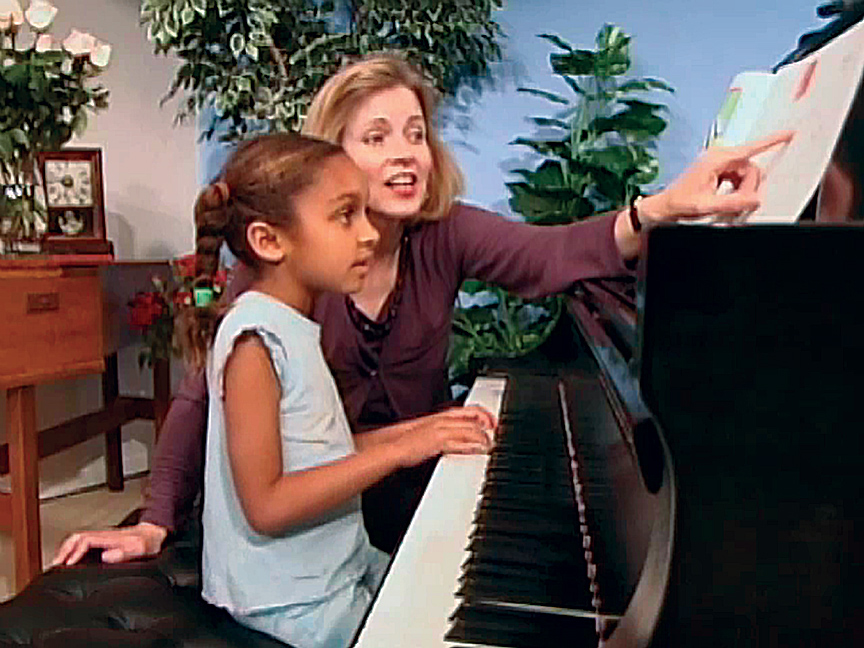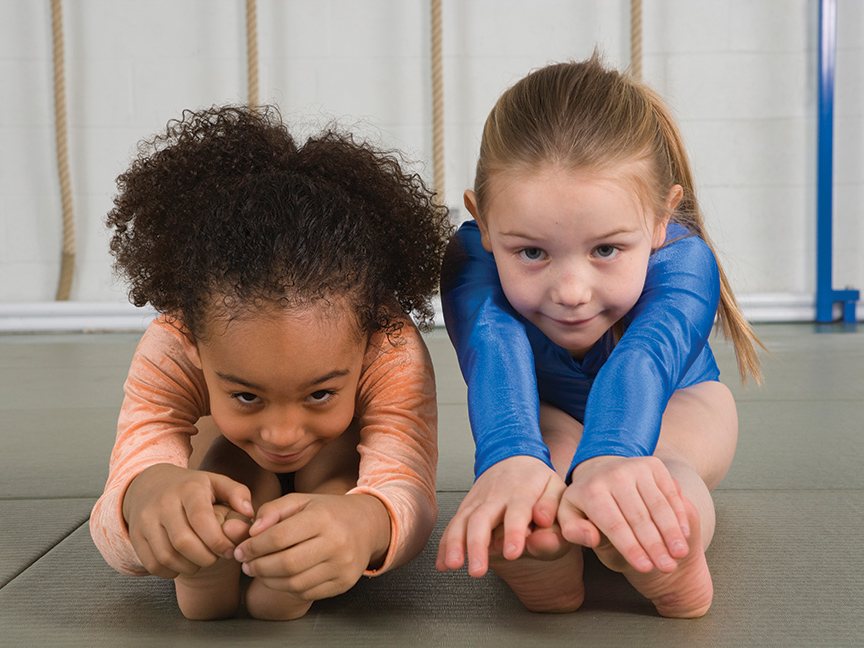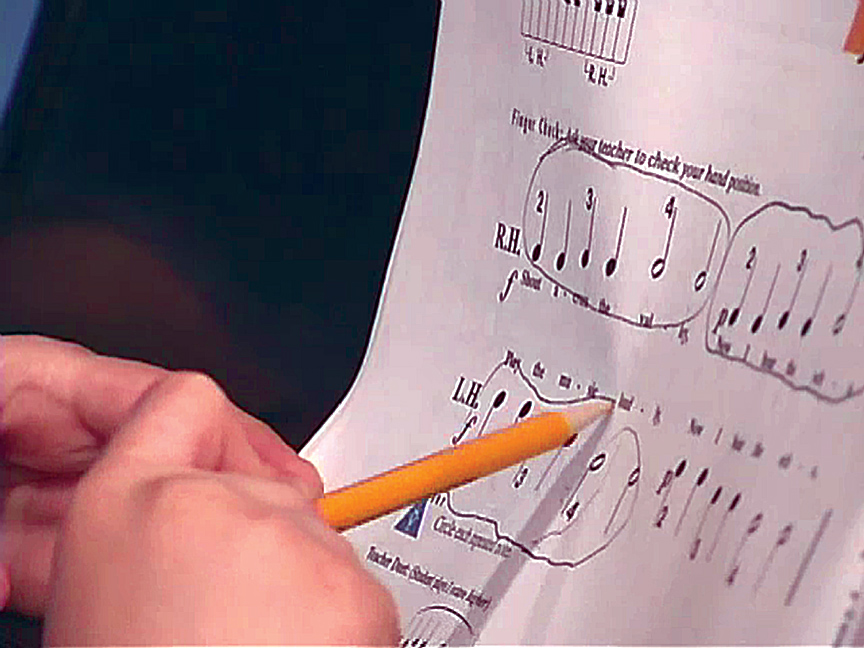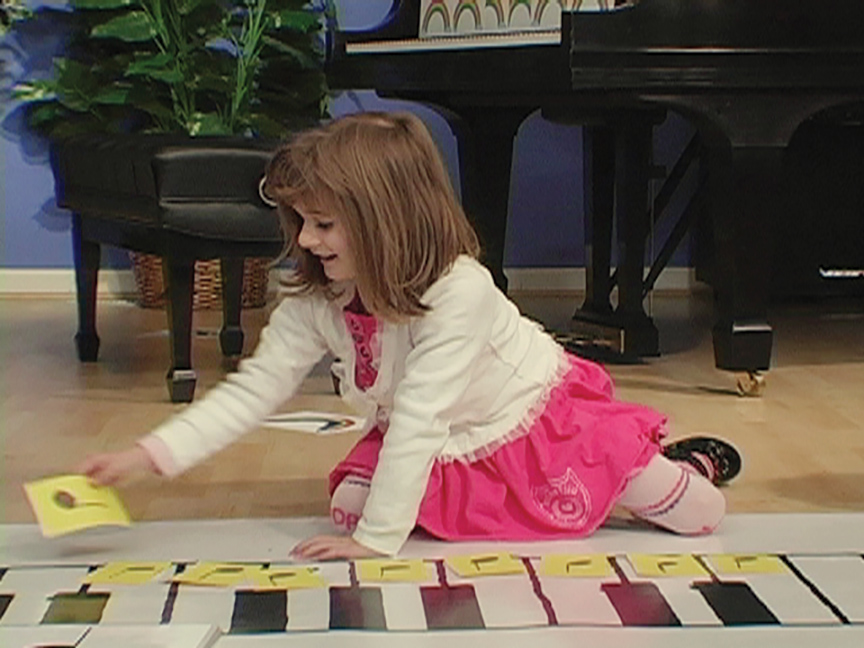We can make music without knowing the note names. So why is it piano teachers put so much emphasis on learning to read the language of music?
In music, the natural learning sequence is similar.
Experience, Then Name
Listen to music … Soft-loud, Fast-slow
Feel rhythms … Note values ( etc)
Play the music … Notation (Grand Staff, clefs, note names, measures, etc.)
Recognize patterns … Same-different
Create music … Improvise, compose
A Reading Runway
Learning can be playful and fun with a fitting challenge, or learning can be risky business. Consider the balance of safety and risk. An element of calm and safety should support the introduction of new risks or challenges. Anxious or frustrated learning comes about when a new stimulus is introduced too fast, or when many stimuli “gang up”against the student’s comfort level and ability to process the information.
The language of music, with its complex and foreign system of symbols, physical requirements for large and small muscle control, and integration of eyes (visual) and ears (aural) makes learning to play the piano possibly the most difficult activity young students encounter.
So the process of reading music must unfold in a natural manner. The unfolding must be in a balance of safety and risk, from something known to something unknown. Gradually, as the unknown becomes safe and familiar, the student is ready for new learning risks and the cycle repeats over and over.
For example, training wheels on a bike provide safety while the risk of balance and pedaling is explored. A swimmer’s “floaties” provide safety for remaining afloat while the risk of paddling in deep water is explored.
Similarly, pre-reading music provides the safety of seeing the contour of the notes moving clearly up and down—unfettered by busy lines and spaces. Letter names are inside the note heads reinforcing the key names. This makes beginning songs in a five-finger position easily playable for a sense of accomplishment.
Steady pulse, beginning finger work, and basic counting can be emphasized from the first lessons. In essence, pre-reading matches the learning curve of almost all young beginners.
Pre-Reading is not a delay of reading “real music.”
In contrast to training wheels and to swimming floaties that are eventually removed, the young pianist’s world becomes increasingly additive and complex. The language of music symbols intensifies and magnifies with the entire Grand Staff, multiple clefs, dynamics, bar lines, time signatures, new rhythms, and on and on!
The process of reading music should unfold in a natural way. Let us pre-view the student’s safety and risk factors, and pre-plan success at the first lessons with pre-reading.
What does Pre-Reading Provide?
Conceptual Skills
- The idea of a steady pulse or beat
- Reading note values
- Reading directionally
- The recognition of musical patterns
Motor Skills
- Differentiating left and right hands
- Eye tracking from left to right
- Placing hands on the correct keys
- Associating “stepping on the keys” to the next key, the next finger, and the next letter name
Musical Skills
- Listening for pitch and rhythm
- Feeling and counting a steady pulse
- Matching notation to performance
- Memorizing a song by patterns
A Rich Opportunity
Pre-reading is not a delay of reading “real music.” It is a rich opportunity to shape perceptual and musical development by engaging all the senses and intellect in appropriate and compelling ways.







